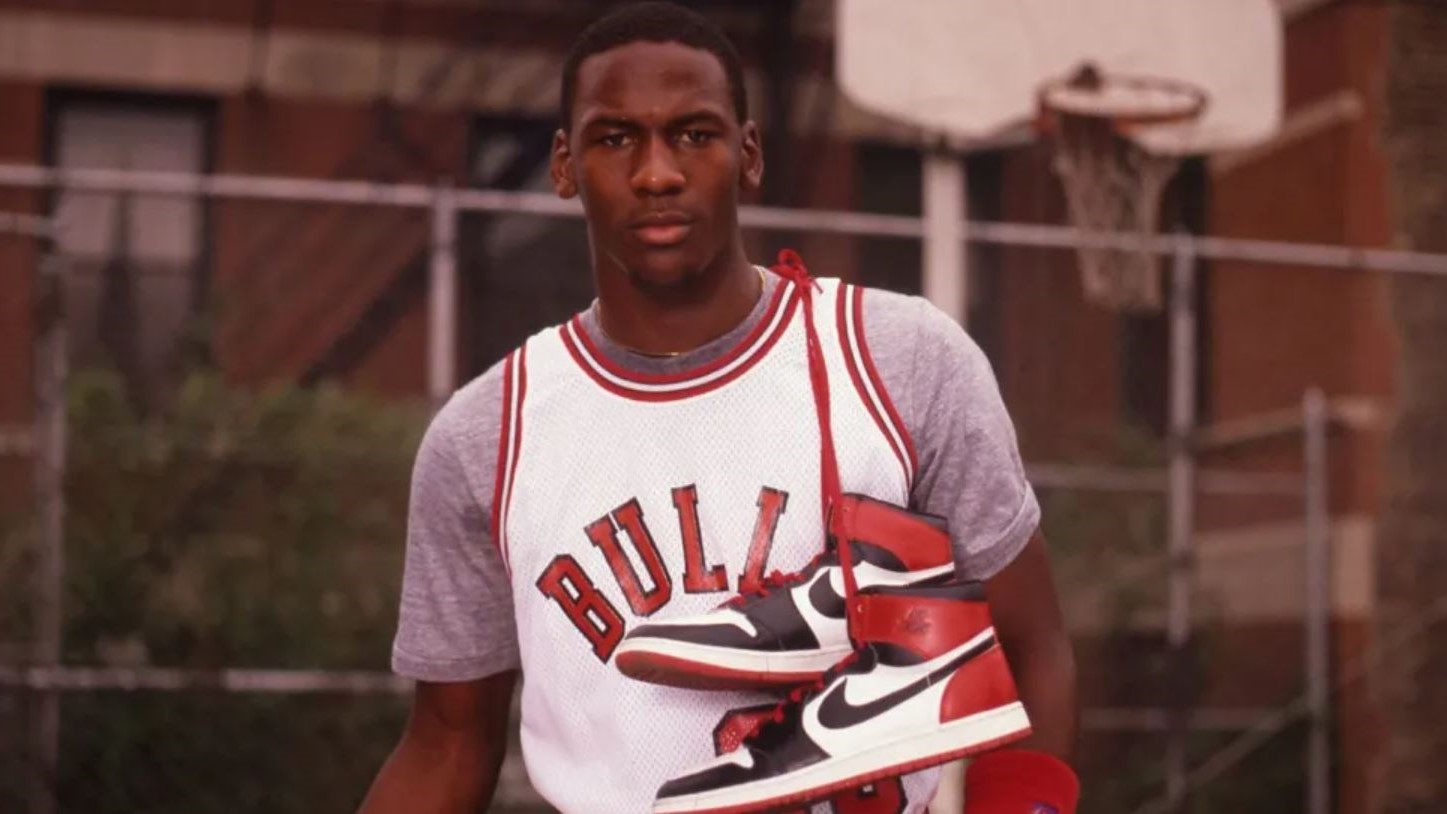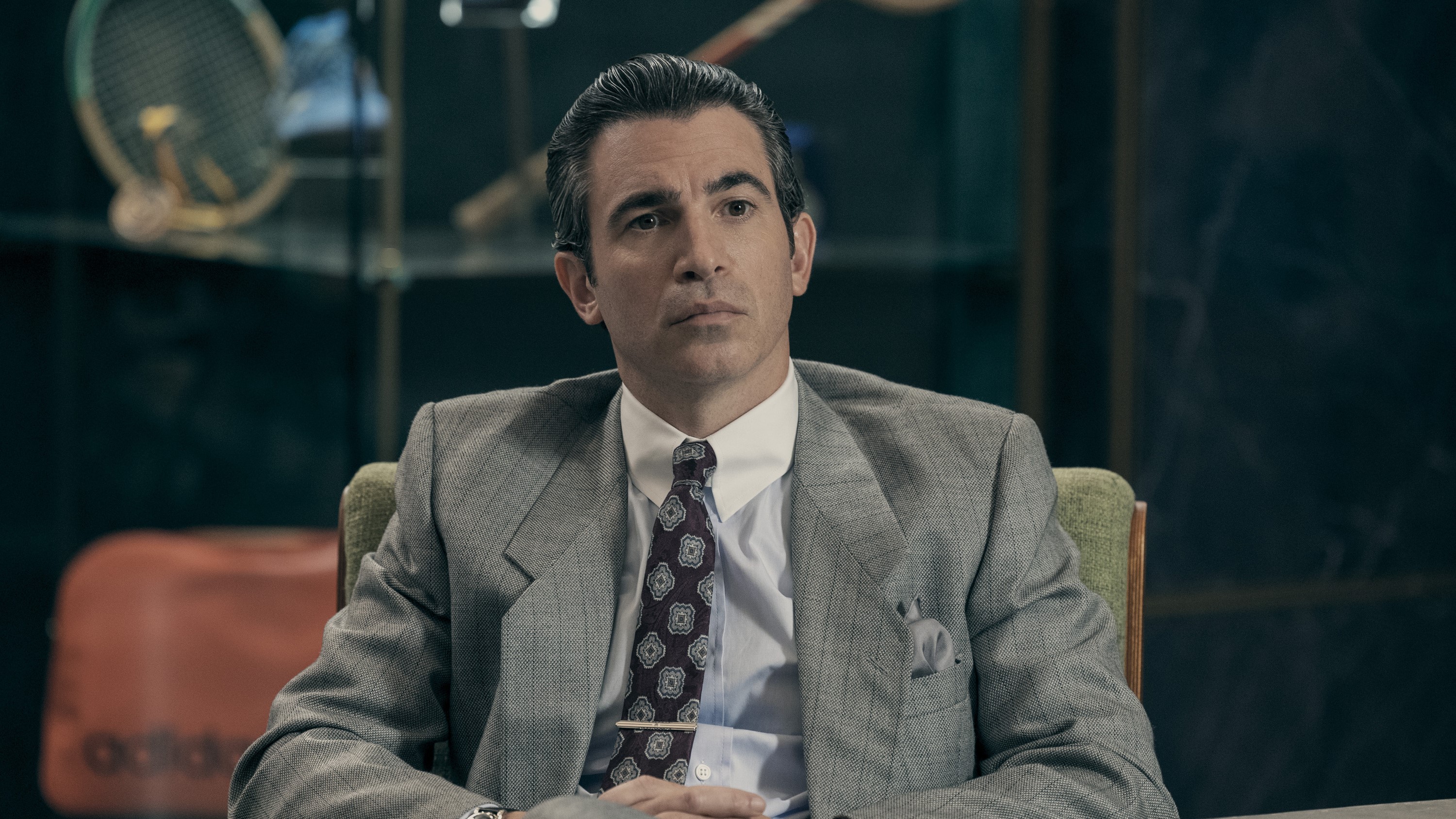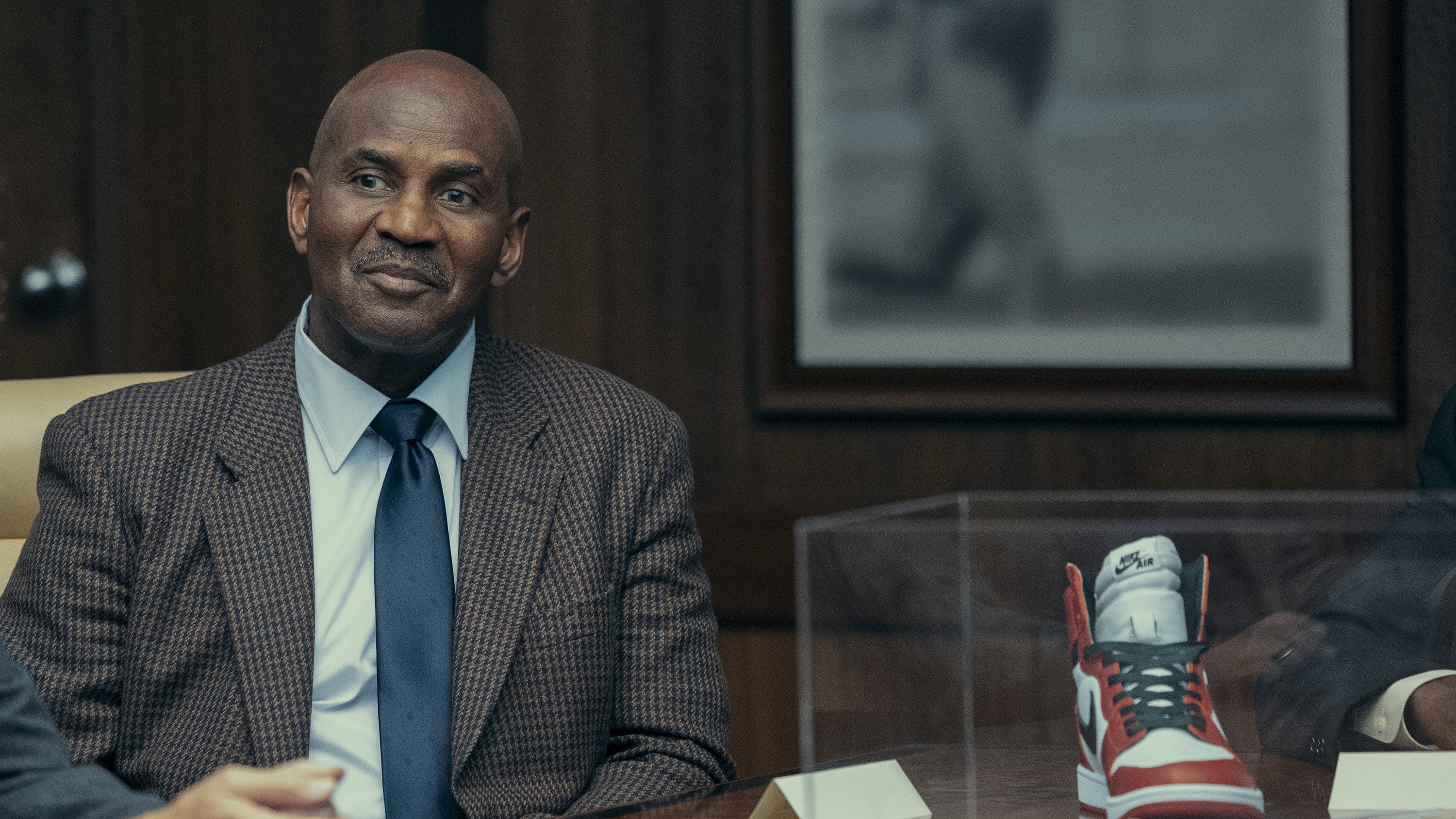Fact vs Fiction: AIR — did Michael Jordan prefer Adidas to Nike?
We look at what's true and what's made up for the movie AIR.

The legend of Michael Jordan is pretty well known at this point, but another layer of the GOAT's backstory comes to light in the new movie AIR. Specifically, how Nike convinced Jordan, heading into his rookie season in 1984, to take a chance on them and their fledgling basketball department. What transpired is arguably one of the greatest pairings in business and sports.
Ben Affleck directed AIR and stars as Nike founder and CEO Phil Knight, alongside Matt Damon as Sonny Vaccaro, the basketball expert who saw the potential of signing a talent like Jordan, and Viola Davis as Michael Jordan's mother Deloris. Jason Bateman, Chris Tucker, Chris Messina, Julius Tennon and Matthew Maher also star.
AIR is filled with fascinating storylines about how Nike and Jordan became the ideal match with the Air Jordan brand. But did everything happen like the movie says it did? Here's what we were able to find out about some of the big questions you may have after watching AIR.
Did Michael Jordan prefer Adidas to Nike?

The fiction
In AIR, there were two competitors Nike had to overcome to sign Michael Jordan — Adidas and Converse, both of which were bigger in the basketball world in 1984. Among the trio, Jordan had a clear preference in Adidas. Sonny is told by Jordan's agent David Falk (Chris Messina) that he has no interest in signing with Nike and doesn't even want to take a meeting.
Was Jordan such a big Adidas fan?
The fact
The latest updates, reviews and unmissable series to watch and more!
Indeed he was. In The Last Dance docuseries, Michael Jordan was asked if he had a shoe company he initially wanted to go with when he was joining the NBA, to which he succinctly replies, "That was Adidas." Some archive footage was also shown with a young Jordan saying he likes Adidas shoes.
The movie shows the Jordans having a meeting with Adidas and the company seemingly eager to make an offer, so why didn't Jordan end up signing with them?
Per David Falk in The Last Dance, Adidas was in a state of dysfunction at the time and didn't feel like they could make an offer to Jordan. "And they had just told me, 'Look, we'd love to have Jordan, we just can't make a shoe work at this point in time,'" said Falk.
The movie portrays that dysfunction as a result of the death of Adidas' founder Adolf Dassler and not having a clear leader at the time. AIR makes it seem like Dassler just recently passed away, but in fact Dassler died in 1978, six years before the movie takes place. Käthe Dassler, Adolf Dassler's wife, who ran the business with their son Horst Dassler following Adolf's death, passed away at the end of 1984, though she is shown in the movie disagreeing with Horst over who is officially in charge.
A former Adidas employee offered another reason Adidas didn't offer Jordan a sponsorship to The Wall Street Journal, saying that while some at Adidas wanted to endorse Jordan, executives in Germany were more interested in sponsoring taller players, like Kareen Abdul-Jabar.
Was there an NBA rule about shoes having too much color?

The fiction
When coming up with the design for the first Air Jordan shoe, Sonny wanted it to immediately stand out from Converse and Adidas, so he asked designer Peter Moore (Matthew Maher) to add some more red. Peter objected, not because he disagreed with Sonny, but because the NBA had a rule that all shoes worn by players had to be at least 51% white. If not the player would be fined $5,000 per game.
With the encouragement of Rob Strasser, Nike decided they'd pay the fine for Jordan and use it as a marketing angle, predicting the shoe being penalized as different would help its popularity. Moore added more red and black to what would eventually become the iconic look for the Air Jordan 1.
The fact
The NBA did have such a rule in place for much of its history. Per ESPN, the official rule was that all sneakers on a team had to be either 51% white or black, with minimal team color accents allowed. That rule was in place for Jordan's rookie season in 1984 and Nike received a warning letter about the Air Jordan 1s.
However, details of what Jordan would have been fined seem to be tweaked for the movie. According to a feature by Boardroom, Brad Johnson, former head of category at Nike Basketball, recounts Rob Strasser was told Jordan would be fined $1,000 for wearing a Nike shoe that did not fit the league's guidelines, so Strasser said they'd send the league a check for $82,000, covering every game. However, Stern said that's not how it would work — Jordan would be fined $1,000, then $5,000, then $10,000, then suspended.
Considering the Air Jordan 1s weren't actually going to be ready until April 1985, Nike did give Jordan a shoe to wear that met league rules for his rookie season. But they did make a marketing campaign over the NBA's insistence that the Air Jordan 1s would not be permitted, bolstering the shoe's popularity.
In case you were wondering, as of 2018, the NBA has allowed players to wear sneakers of any color during games.
Did George Raveling have a copy of Martin Luther King's "I Have a Dream" speech?

The fiction
As Sonny sets his sights on Michael Jordan, he goes to meet his friend and basketball coach Geroge Raveling (Marlon Wayans), who coached the young basketball star at the '84 Olympics. Raveling says he tried to put a good word in for Nike with Jordan, but tells Sonny Jordan wasn't interested. As a bit of motivation, Raveling tells Sonny a story about when he was a teenager he went to a Civil Rights march and stood security for a speech. After hearing it, he told the speaker it was the greatest speech he had ever heard. The speaker was appreciative and gave George a copy of the speech. George then realized the second half had been entirely improvised.
That was Martin Luther King's "I Have a Dream" speech. Did Raveling really have a copy of it in his possession?
The fact
This story is mostly accurate. A feature from Sports Illustrated details that Raveling did attend the March on Washington event in 1963 and worked security during the speeches. It details how King delivered one of the most famous speeches in history mostly off the cuff. Then, as Dr. King passed Raveling, the basketball coach asked if he could have the speech, which King obliged.
Sports Illustrated also confirms the note during the AIR credits that Raveling turned down $3 million for the speech. Though in 2021, Raveling donated the speech to Villanova University, his alma mater.
AIR is now playing exclusively in movie theaters.

Michael Balderston is What to Watch’s assistant managing editor and lead movie writer, , writing movie reviews and highlighting new and classic movies on streaming services; he also covers a range of TV shows, including those in the Taylor Sheridan universe, Slow Horses, Only Murders in the Building, Jeopardy!, Saturday Night Live and more, as well as the best ways to watch some major US sporting events.
Based outside of Washington, D.C., Michael's previous experience includes writing for Awards Circuit, TV Technology and The Wrap.
Michael’s favorite movie of all time is Casablanca, while his favorite TV show is Seinfeld. Some 2025 favorites include Sinners, One of Them Days and Black Bag for movies, and The Pitt on TV. Follow on Michael Balderston on Letterboxd.

